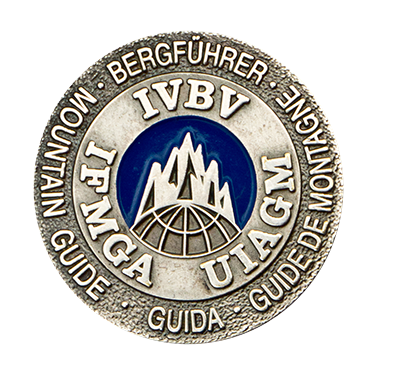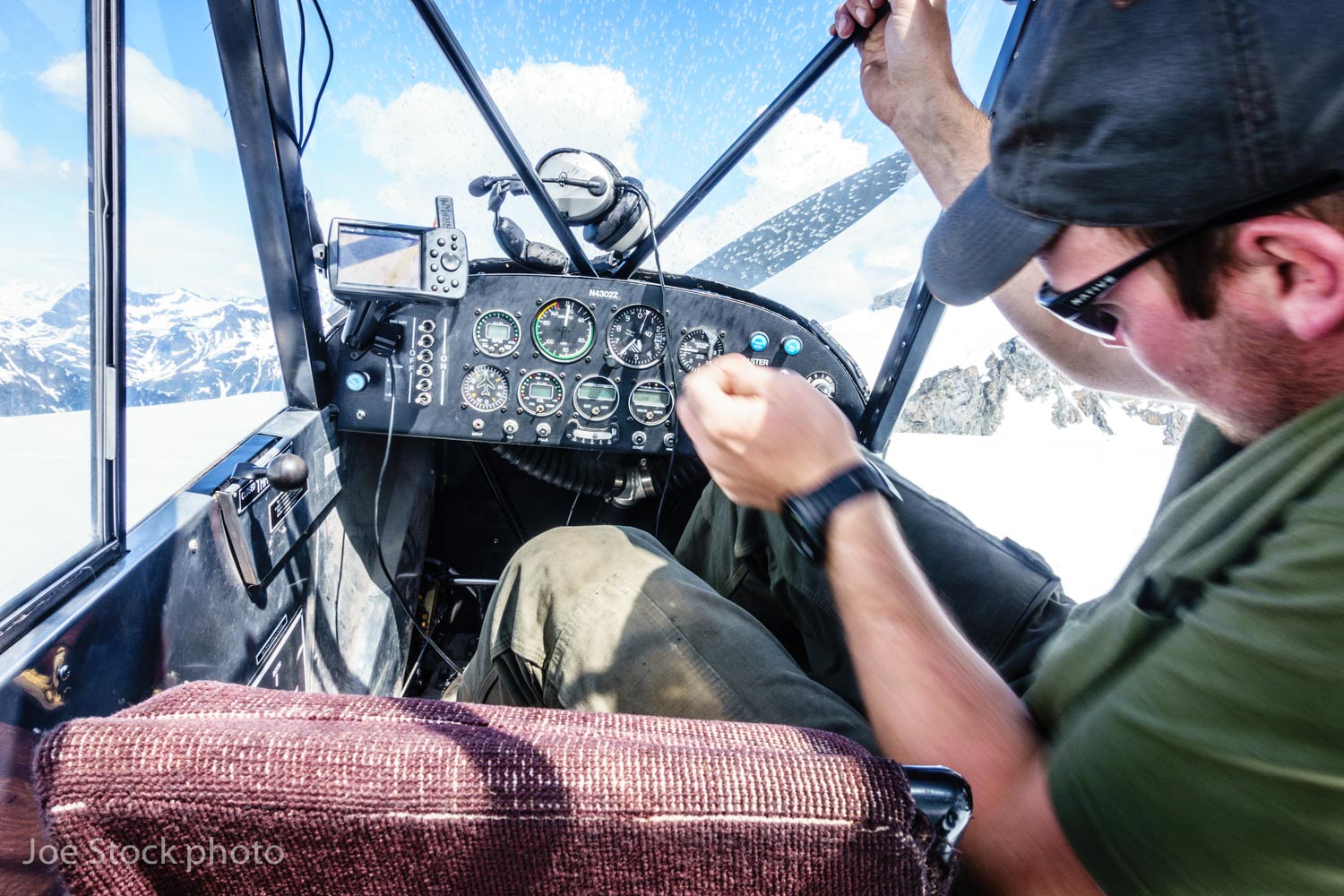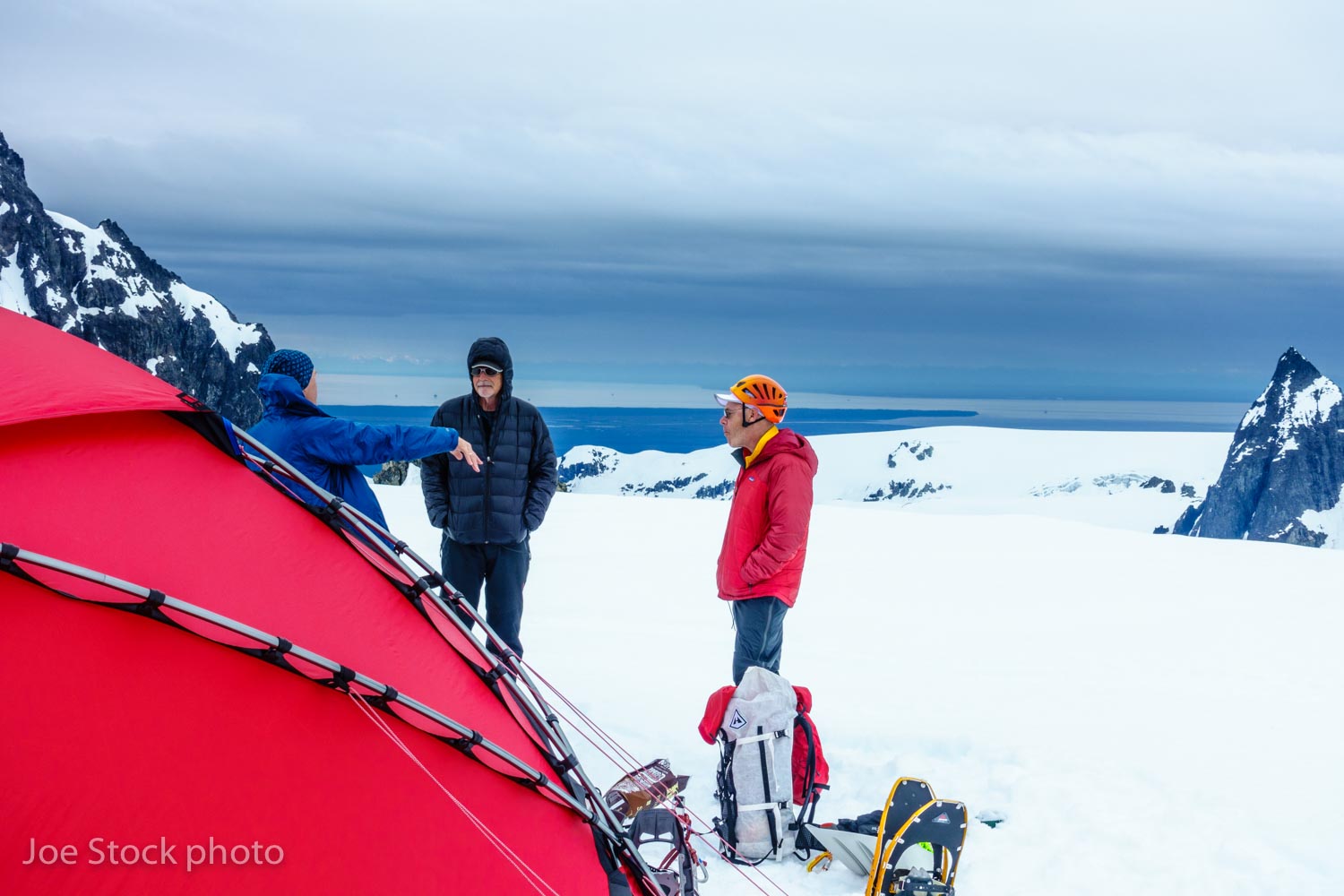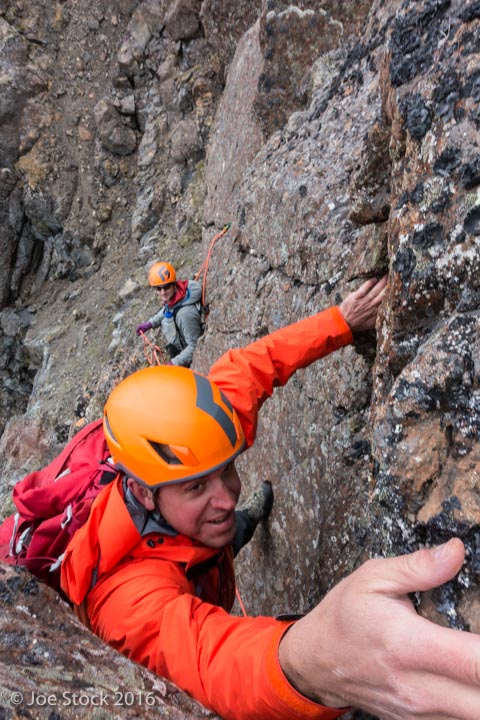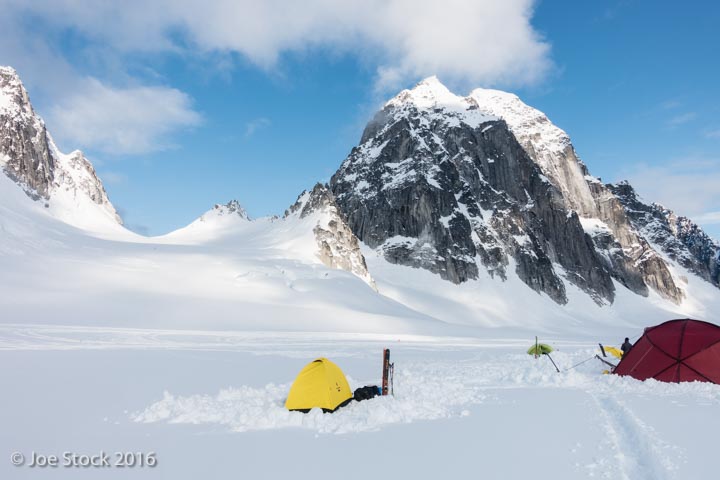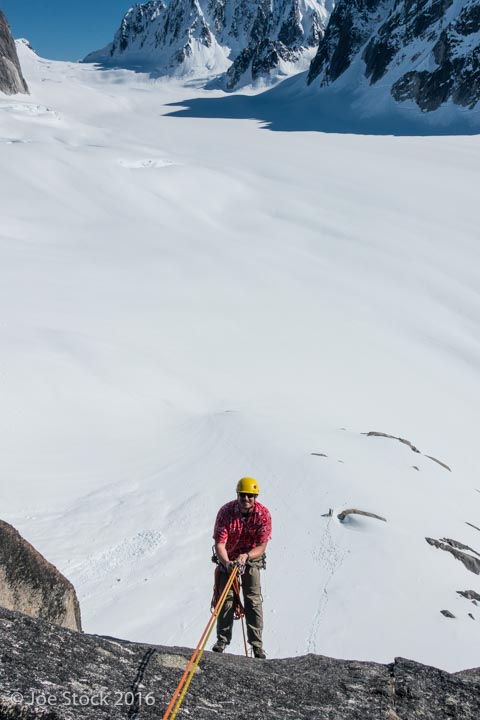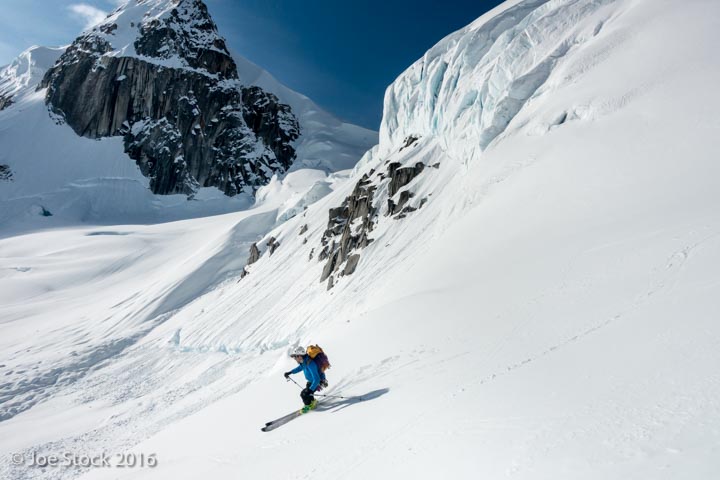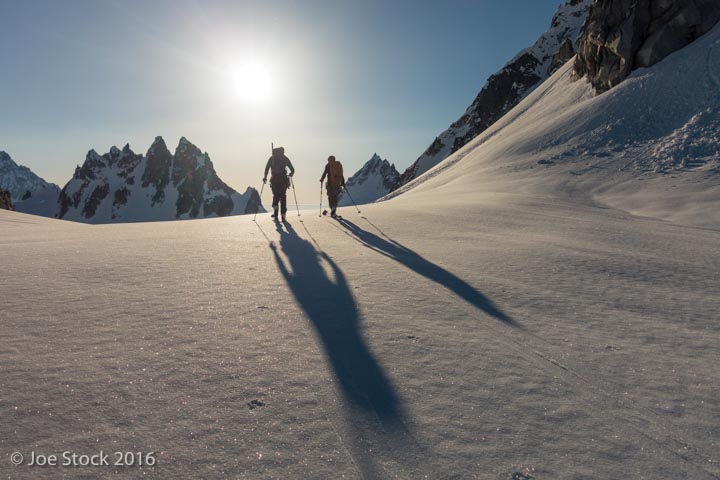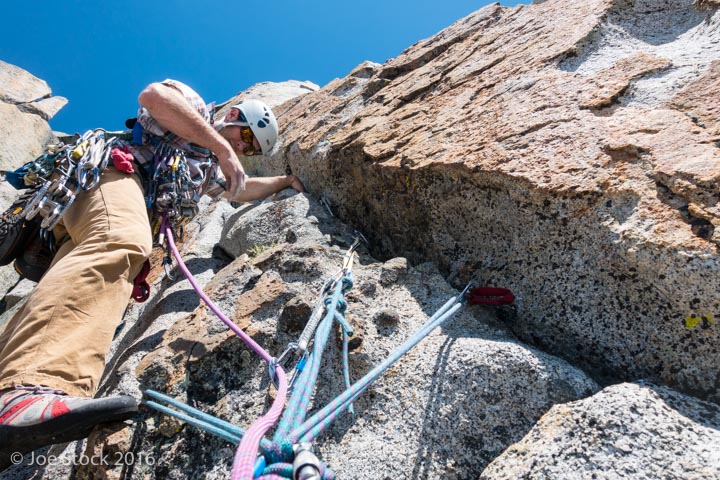In 1997 Adrian Nature climbed to the North summit of Denali and skied alone down the 14,000-foot Wickersham Wall, the biggest face in North America. Rumor has it, at one point the skiing became so steep that he tossed his pack, retrieving it further down. Then he fell but managed to stop. Hours later, Nature crossed the flooding Muldrow River. It was the first solo and continuous ski descent of the face. A feat accomplished using his own power, starting from the base of the mountain, climbing to the top and skiing back down. Nature skied the Wickersham Wall by fair means.
The term by fair means describes climbing mountains using your strength and ability, while not degrading the mountain to make the ascent easier. By fair means is the purest style of mountaineering. It follows a set of unwritten ethics established by the mountaineering community. The same concepts of mountaineering by fair means can be applied to skiing.
By fair means was coined by English mountaineer Albert Mummery, who in 1880 backed off the coveted first ascent of the Dent du Géant, a 4,000-meter tooth of rock on the Mont Blanc massif in France. Upon defeat, Mummery said, "Absolutely inaccessible by fair means!" The first ascent of the Dent du Géant came later, in 1882, using iron stanchions, fixed rope and chipped steps. The route is now equipped with thick ropes for climbing hand-over-hand to avoid 5.10 rock climbing.
“Without style and ethics in the mountains, what do we really have?”
By fair means is a style of moving through the mountains. It describes the manner, skill and equipment used. For example, the best mountaineers use alpine style to move fast and light, as a self-sufficient unit up the mountain. Alpinists—those who climb in alpine style—avoid using fixed ropes, fixed camps, or bottled oxygen. Such as the recent alpine-style ascent of the north face of Jannu. Alpine style is the antithesis of expedition style, where high altitude mountains are climbed by any means necessary: large teams, bottled oxygen, porters, fixed ropes and bolts.
“Imagine using a step ladder to dunk a basketball.”
For skiing, the most common style is mechanized skiing. A machine—chairlift, gondola, snowcat, snowmobile, or helicopter—lifts the skier to the top of the run. The difficulty of the mountain has been reduced, making it attainable for more skiers, like expedition style.
Backcountry skiing is equivalent to alpine style. The skier starts at the base of the mountain, ascends the mountain using their skill and strength before making the run. The mountain is approached on its own terms, without using aids to make it easier, or degrading the mountain.
Where exactly is the line between mechanized skiing and skiing by fair means? Most backcountry skiers use cars to get to the trailhead. What if a snowmobile is used for a ten-mile approach, before climbing to the summit? Is that backcountry skiing? Is that by fair means? It becomes an ethical gray area. In alpinism, the community has drawn an acceptable line. As the late alpinist Hayden Kennedy said, "It's not a kindergarten black and white...the naked free solo."
Part of what bolsters the credentials of skiing by fair means is that it foregoes a guaranteed outcome. While you may want to climb and ski a mountain, there’s a good chance you won’t. An equally likely outcome is to fail because of weather, avalanche conditions, strength or skill. The summit or a glorious descent are not guaranteed. By fair means requires a mindset shift to seeing failure as equal to success, and style as more important than success. It’s “more of an art and less of a conquest,” writes alpinist Kelly Cordes. We approach nature on its own terms and be challenged. Then nature often wins, like it's supposed to.
“The quality of the experience and how we solve a problem is more important than whether we solve it. We strive to leave no trace.”
Another beautiful aspect of skiing by fair means is that it’s slow. Not only does it take time to climb the mountain, but it takes years to acquire the skiing and avalanche skills. Those years of practice build appreciation for the mountains. Likewise, the time-consuming act of climbing the mountain gives more appreciation for the mountains, not just a myopic focus on the summit or the brief descent. The anticipation and delayed gratification of possibly skiing the peak, or arriving back at the base of the mountain alive, brings greater highs when success is achieved and greater lows from failure. All that leads to happiness. Ultimately, happiness is what we’re after.
“It’s time we... searched again for the limits of possibility—for we must have such limits if we are going to use the virtue of courage to approach them. ”
A final positive note about by fair means is that it demonstrates a world-view. Backcountry skiers know that wild places on Earth are few. Skiing by fair means saves those wild places for everyone. Foregoing the archaic attitude of man over nature.
Even the most diehard practitioners of by fair means find themselves in that ethical grey area. I use helicopters and airplanes for skiing. Sometimes to reach summits, sometimes to base camps and sometimes to fly to other countries to ski. My preferred method of skiing, though, is to park along the highway, skin and climb to a summit, and then ski back to the car. If I do use a machine to get up the hill, I try to acknowledge that there is a better style. That I am playing foosball, when I could be kicking a real ball.
More Reading
Albert, Jason and Fabrikant, Adam 2024, Grand Descents: A Half Century of Ski Alpinism in the Tetons, American Alpine Journal.
Cordes, Kelly, 2014, The Tower: A Chronicle of Climbing and Controversy on Cerro Torre.
Messner, Reinhold, 1971, The Murder of the Impossible, Mountain #15.
Jenkins, Mark, 2005, The Elements of Style: It's time for a radical reform of high-altitude mountaineering and a fresh debate over what it means to climb right, Outsideonline.com, www.outsideonline.com/1909956/elements-style
Kennedy, Hayden, 2012, The Enormocast, Episode 7, an interview with Hayden Kennedy: Alpine Taliban or Patagonian Custodian? Part 2.
The Tyrol Declaration on Best Practice in Mountain Sports, www.theuiaa.org/upload_area/files/1/tyrol_declaration(0).pdf
